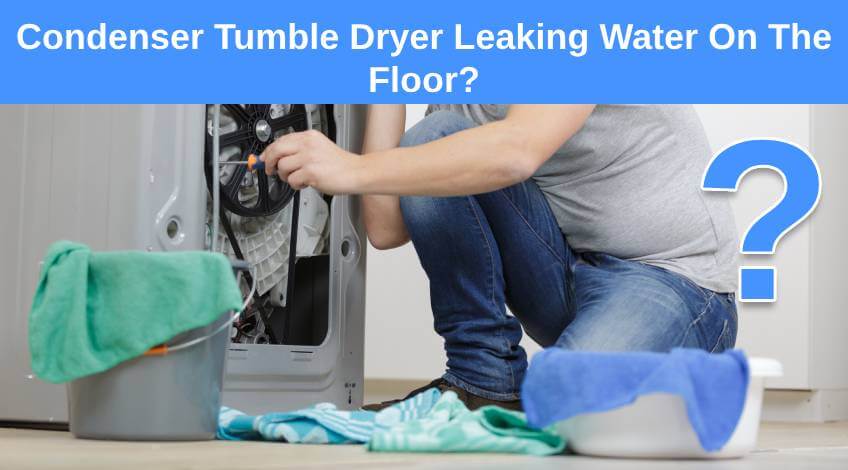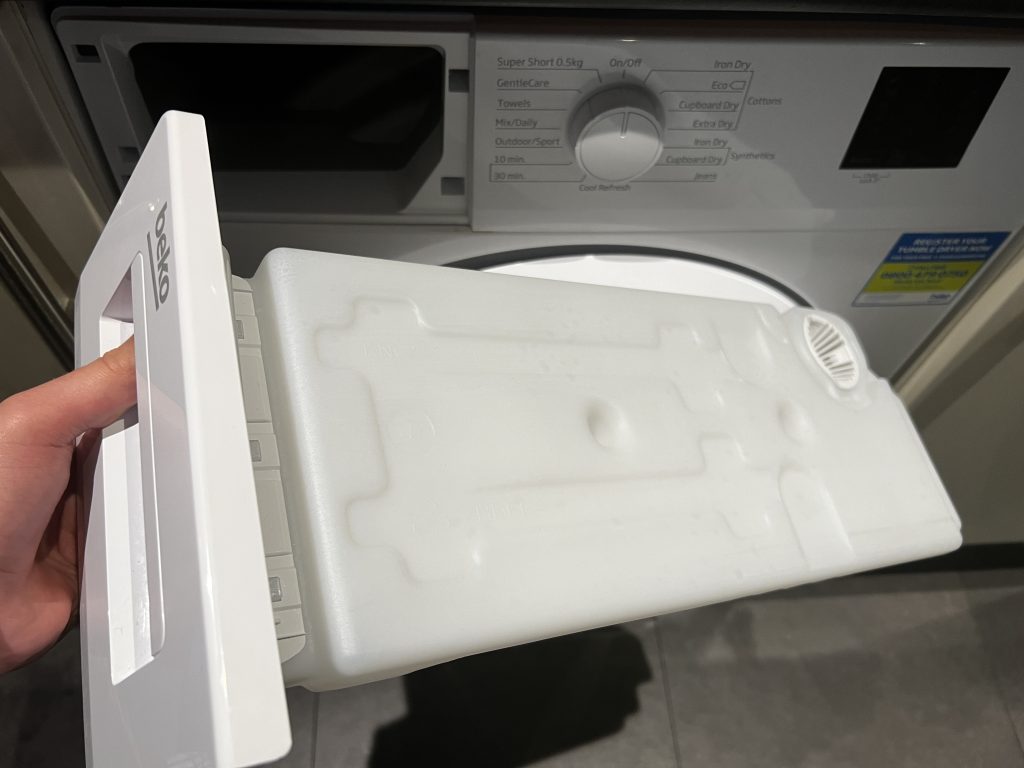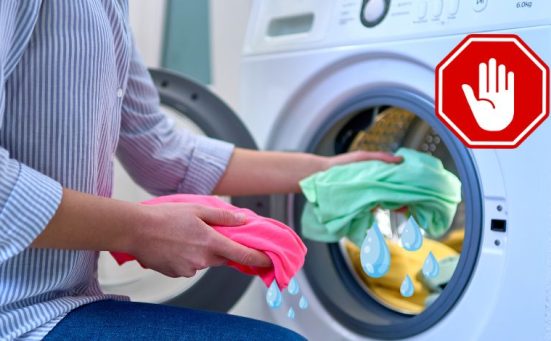
Condenser Tumble Dryer Leaking Water On The Floor? Here’s why & what to do
So, you’ve just discovered a mysterious puddle under your condenser tumble dryer, and you’re left wondering, “Why is this happening?”
In most cases, leaks happen due to an overfilled water tank which you’ll just need to empty or clean, or due to other reasons such as there could be a blockage in your dryer that needs fixing.
Before you panic, most of the culprits only require a simple fix, and this article will guide you through the common culprits and what you can do about them.
Culprit #1: Water Tank
First things first, the water tank in your condenser dryer might likely be the sneaky source of your floor puddles! Unlike vented dryers that release steam externally, condenser dryers store moisture in a designated water tank.
Hence, if you see water pooling, start by checking and emptying the water tank regularly, even before it reaches full capacity.

Inspect the tank for cracks or blockages, and if all seems well, ensure it’s securely in place. A loose tray can result in water splashing around. If the tank is damaged, you’ll need to get a replacement to prevent ongoing leaks.
Culprit #2: Lint Filter
Lint, those tiny fabric bits from your clothes, can make a mess in your dryer and be a culprit for leaks. An overloaded lint filter can lead to clogs, obstructing proper water drainage and causing leaks.
Prevent this by cleaning the lint filter after each use. Remove it, rinse it under running water, dry with a microfibre towel, and securely place it back.
NOTE: Always refer to your machine’s User Manual for specific cleaning instructions to avoid any potential damage!
Culprit #3: Door Seal
Your dryer’s door seal, a rubber gasket, could be another reason why your dryer is leaking water on your floors. This is because over time, wear and tear can cause leaks directly under the dryer’s door.

If you notice the leak in this area, inspect the door seal for signs of damage and replace it if necessary to keep the water where it belongs.
Culprit #4: Pump
The dryer’s pump functions like its heart, circulating water to where it needs to go. If it’s faulty or clogged, water may escape and create a mess.
Consider calling a professional to inspect your machine if you suspect pump issues.
If you’re feeling confident of your DIY skills, consult the user manual, locate the pump, and try cleaning it. Just remember, always unplug the machine before attempting any maintenance!
Culprit #5: Drain Hose
Some condenser dryers have additional drain hoses that can be connected to the main drainage system of the home from the water tank on the dryer. These eliminate the need to empty the water tank.
If this gets kinked or blocked, it can also lead to leaks.
Straighten out kinks and use a torch to check for blockages. Wipe away dust with a dry microfibre cloth to ensure proper water flow.
If the hose is severely damaged, it’s time for a replacement. Check the manufacturer’s website for spare parts.
Culprit #6: Condenser
The condenser itself could be the cause of your wet floors. Check your user manual to see where to locate and how to remove your condenser, which is often made from metal and has a vent tube attached to it.
If it is extremely dirty and you can see dust or lint in it, put it under running water until all the debris is removed, or use a vacuum cleaner to suck it out.
Also, make sure to check the area around your condenser! There is a chance that lint and other debris can make their way into the area where the condenser fits and hinder your machine from operating properly. Remove any fluff build-up using a clean, dry microfibre towel before returning your condenser unit to its rightful place.
TIP: Clean your condenser at least once a month to keep it in its best shape.
Culprit #7: Unlevel Machine
An unlevel condenser tumble dryer can lead to water pooling and spilling. If your machine is new or recently moved, check for unlevel floors.

Is your machine shaking and making loud noises when in use? If so, get a spirit level to check its balance.
Since most machines come with adjustable feet, feel free to make your adjustments until the dryer is completely level, or get a solid platform to place your machine on. Just make sure to secure all lock nuts on the dryers feet to prevent any accidents or damage from happening.
Bonus Tip: Keep Your Laundry Room Well-Ventilated!
To maintain your condenser dryer’s efficiency and prevent significant damage, ensure proper ventilation in your laundry room. Good airflow not only aids the dryer but also keeps the room fresh and damp-free!
Do you have any questions? Feel free to ask them below!
SEE ALSO: Do Condenser Tumble Dryers Give Off Heat?
SEE ALSO: Washing Machine Leaking From Drawer? (common causes & solutions)
Frequently Asked Questions
Leaks in a condenser dryer often result from an overfilled water tank, a clogged lint filter, a damaged door seal, a faulty pump, a blocked drain hose, a dirty condenser, or an unlevel machine. Regular maintenance and troubleshooting these areas can help prevent water leaks.
If your dryer is leaking water at the front, check the door seal for wear and tear. Damaged seals can allow water to escape. Inspect the seal and replace it if necessary to keep water where it belongs.
To maintain a condenser tumble dryer, regularly empty and clean the water tank, clean the lint filter after each use, inspect and replace a damaged door seal, check and clean the pump, examine and clear the drain hose, clean the condenser at least once a month, and ensure the machine is on a level surface.
The lifespan of a tumble dryer varies, but on average, it ranges from 10 to 15 years. Regular maintenance and proper use can contribute to extending its lifespan.
Several factors can damage a dryer, including overloading it, using incorrect settings, neglecting regular maintenance like cleaning the lint filter and condenser, and not addressing issues like leaks as soon as you can.
Also, follow us on Pinterest ...



